Brown Canyon Sandstone: Building Sustainable Landscapes in Utah
Karin Kirk
Reprint Courtesy usenaturalstone.org
Photos Courtesy Mountain Valley Stone
Map and chart © Karin Kirk, 2024
When people in Park City, Utah imagine gold and silver, they’re probably thinking about Olympic medals awarded to athletes who live and train in this chic alpine town. But Park City has a deeper connection to precious metals, because it’s one of the state’s richest sources of gold, silver, copper, lead, and zinc.
In the 1800s, long before the gorgeous ski runs and slopeside real estate, Park City was a bustling mining district with hundreds of mines and a thriving industry.
Today, the mining tradition continues – not just for metals but for natural stone as well. A few miles beyond Park City, near the small town of Peoa, Utah, sits the Browns Canyon quarry, the source of robust sandstone seen frequently in Park City architecture and landscape design.
This sandstone is known geologically as the Nugget Sandstone, and it was once one of the world’s largest expanses of sand dunes. It formed during the age of dinosaurs, 145 million years ago, during the Jurassic and Cretaceous Periods. The stone contains sand grains that traveled from landscapes as far away as the Appalachian region, carried westward by a transcontinental river system, then lofted by wind across a vast desert. Eventually, the sand dunes were covered by rising seas and buried by other sediments, which helped transform the sand into layers of sandstone.
As the Rocky Mountains were uplifted, the sandstone was tilted and brought closer to the surface, providing a local building stone for the growing communities nearby.
 |
|
Browns Canyon sandstone is quartz-rich and varies from a light, warm tan to a warm russet-brown. |
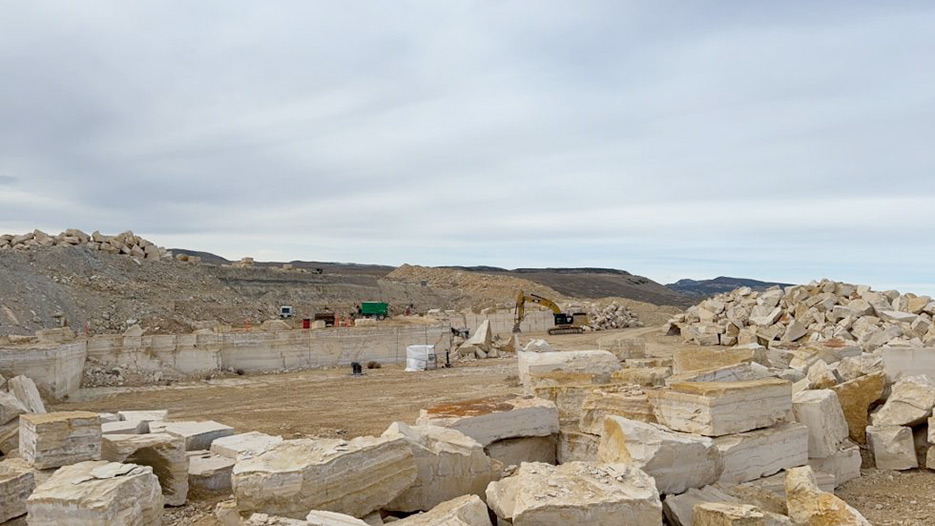 |
From Masons to Quarry Owners
The Browns Canyon quarry taps into quartz-rich sandstone, which has a consistent grain and ranges in color from a light, warm grey to richly-colored russet brown. The quarry is owned and operated by the Mountain Valley Stone company, which has its roots as a masonry company. RJ Masonry was the largest customer of the sandstone, and they developed a keen understanding for the stone and its market. When the owners of RJ Masonry, Robert John Hicken (RJ) and Paul Ballif, were offered the option to purchase the Mountain Valley Stone quarry, they took the leap.
With some organizational changes and infrastructure upgrades, Robert and Paul sought to leverage their experience to serve the local mason market while also expanding their out-of-state customer base.
Their bet turned out to be correct. In 1999, the quarry area was roughly the size of an Olympic-sized swimming pool. Today, it is hundreds of feet deep and covers more than 150 acres, and the stone is distributed nationwide.
A Natural Stone for Natural Landscapes
The Browns Canyon quarry produces both light tan and red quartz-rich sandstone. Their most popular stone is the Browns Canyon Blond, which has developed a loyal following as a locally-sourced, durable material. Many of Mountain Valley Stone’s customers are located in the Western U.S. and Canada. The company works with homeowners, contractors, architects and designers, but their largest focus is masons and landscapers. Naturally, a local stone suits the setting perfectly, helping landscapes and buildings appear at ease in their spectacular alpine setting.
The City Creek Center in Salt Lake City is a stunning example of using Browns Canyon stone to create a naturalized water feature, as a creek bounces down boulders and among aspen trees in the midst of a mixed-use urban development featuring retail shopping, dining, and offices, and apartments.
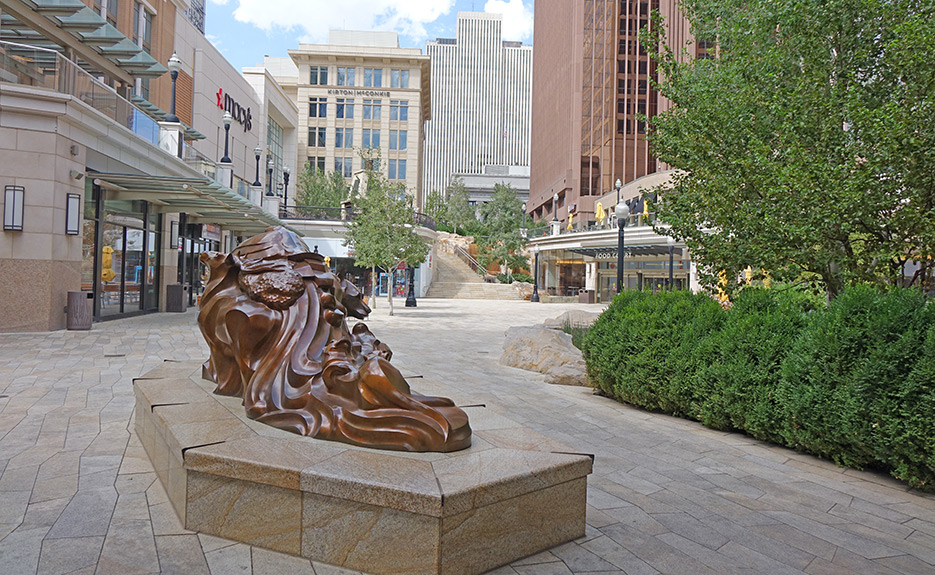 |
|
Type of Stone: Sandstone Quarried from Utah |
Utah White Limestone
The company added a second quarry near Gunnison, Utah, which is about 130 miles south of the Brown’s Canyon quarry. The Utah White Limestone is ivory white with a uniform texture and coloring, which presents as a smooth, white surface. The stone is well suited for contemporary designs. The Winter Ridge variation is a light, golden tan, blending effortlessly with the colors of the surrounding landscape.
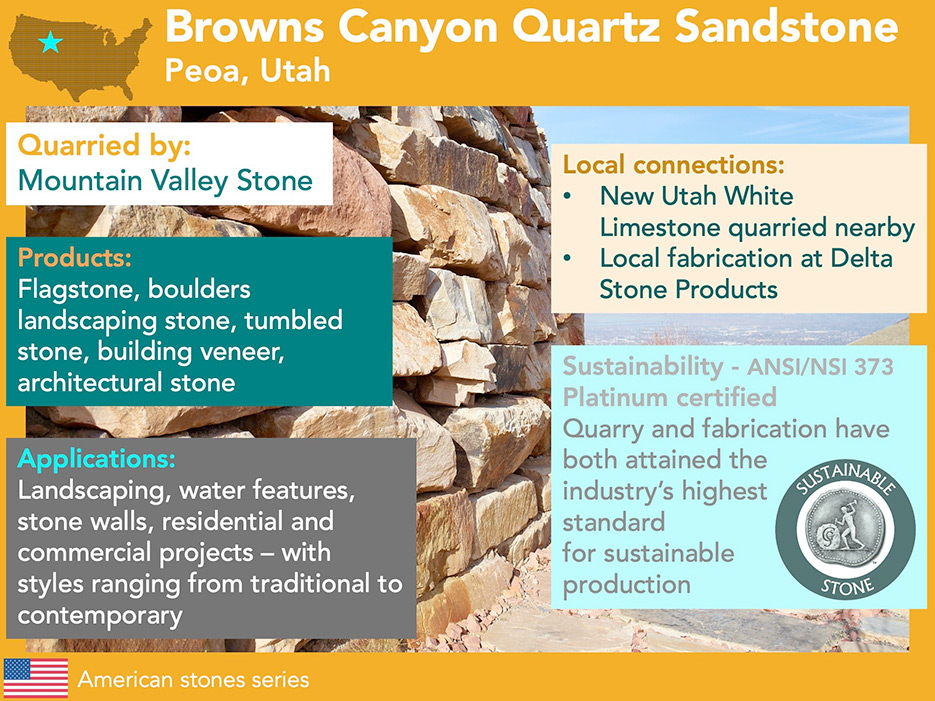 |
Local Quarries; Local Fabrication
Mountain Valley Stone partners with its sister company, Delta Stone Products, for fabrication and distribution of their stones. This facility is located in between the two quarries, keeping the entire supply chain close to home, which saves both money and time.
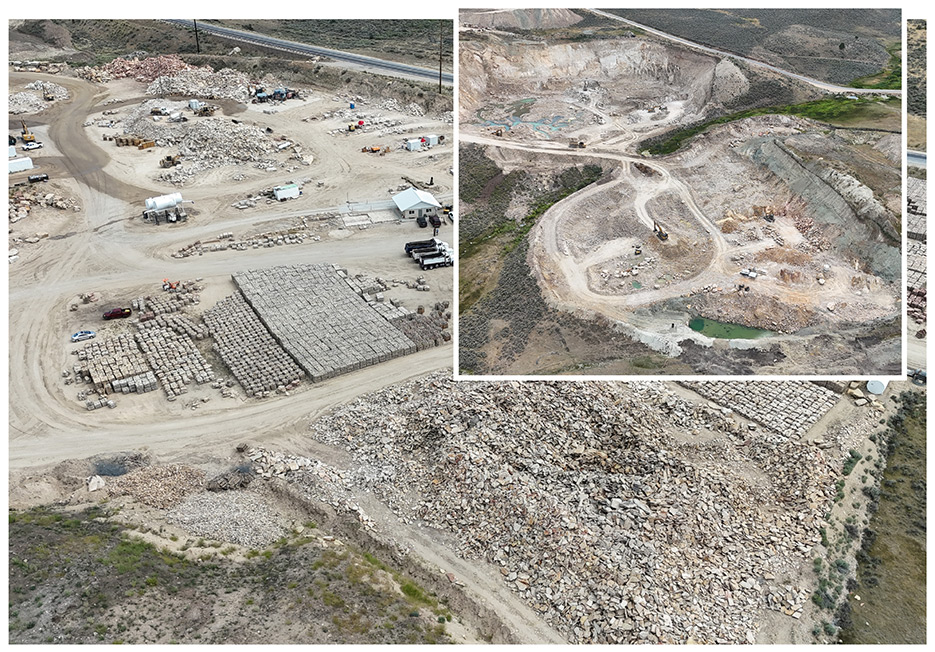 |
|
The main quarry near Peoa, Utah covers more than 150 acres. A sister company, Delta Stone Products, also handles fabrication and distribution. |
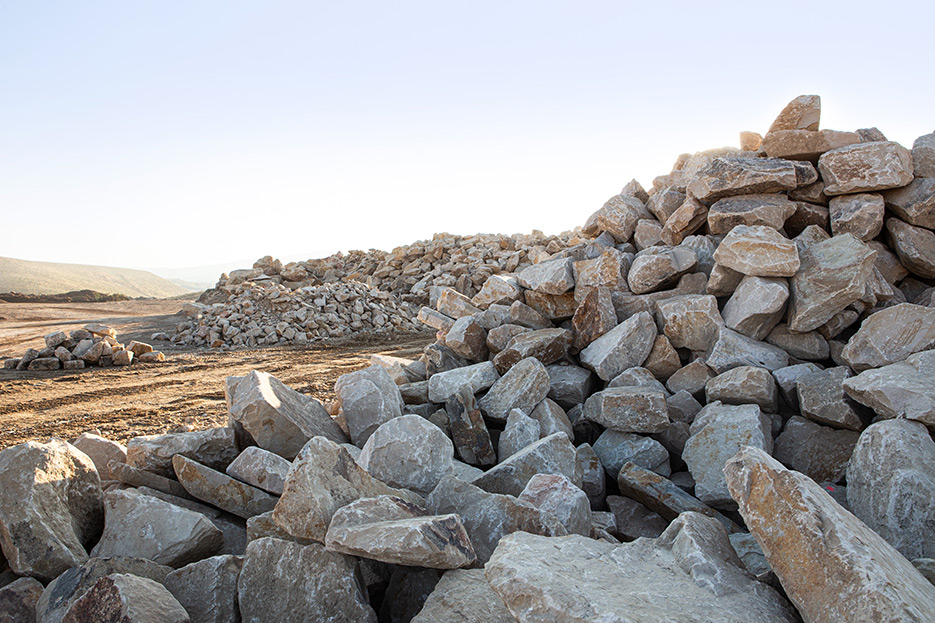 |
Certified Sustainable from Quarry To Fabrication
Mountain Valley Stone is a platinum rated quarry by the ANSI/NSI 373 standards. To minimize waste, 95% of all the material mined is used either for landscaping stone, building products, or aggregate. The other 5% of material that cannot be used for stone products is used for reclamation purposes, making the entire operation highly efficient. The quarry also uses water that is collected in the mine for dust suppression.
Delta Stone Products is a Platinum Certified sustainable fabricator, a distinction only awarded to two fabricators in the U.S. and Canada.
In an era where just about any company can try to boost their environmental credibility, an independent, rigorous standard is the real deal. Because of this rigorous certification, architects and homeowners can be assured that stone for their projects is produced to the highest standards in the industry. By making sustainability a priority, the entire Mountain Valley Stone operation can keep its eye on the future and help to ensure that these beautiful mountain landscapes are preserved for many generations to come.
Karin Kirk is a geologist and science educator with over 20 years of experience and brings a different perspective to the stone industry topics. Karin is a regular contributor to usenaturalstone.org, NASA, and the Slippery Rock Gazette. Contact her at karinkirk@gmail.com .
This article is part of an ongoing series about American quarries.